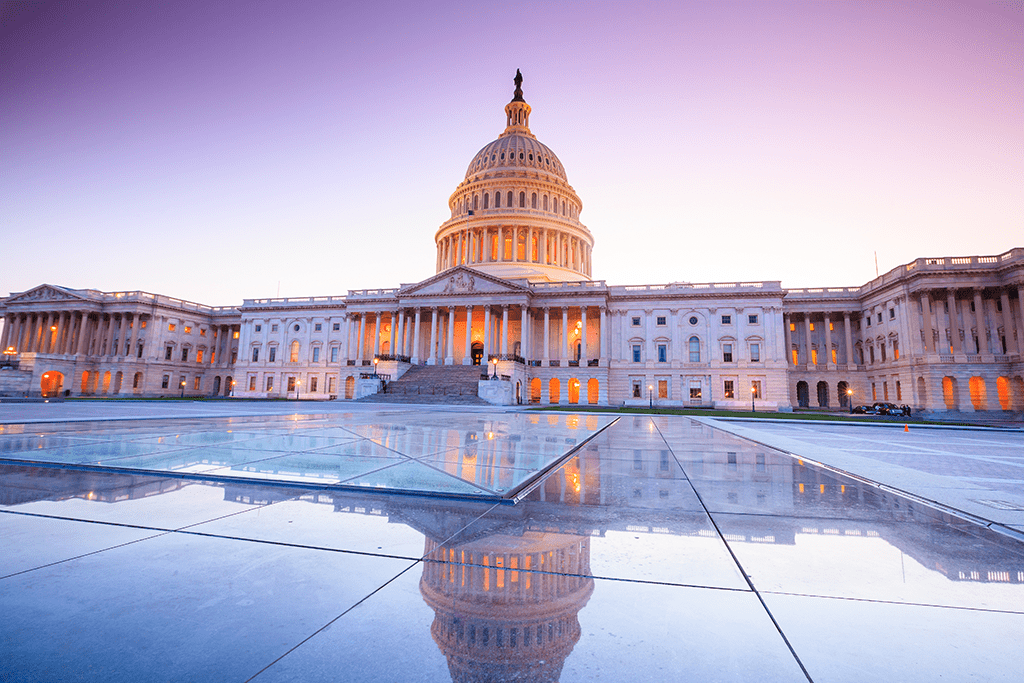Employee Benefits Compliance Alert
Compliance Alert: Congress Passes the American Rescue Plan Act
Congress has passed, and President Biden has signed, the American Rescue Plan Act, 2021 (ARPA), the third COVID-19 stimulus bill. This new $1.9 trillion stimulus package includes several health and welfare benefits-related provisions relevant to employers and plan sponsors, as summarized below.

FFCRA Paid Leave Extended and Enhanced
While COVID-19 vaccines are starting to become more readily available, the pandemic continues. In recognition, Congress extended through September 30, 2021, the refundable payroll tax credits for emergency paid sick leave (EPSL) and extended family and medical leave (E-FMLA), which were enacted pursuant to the Families First Coronavirus Response Act. As with the extension through March 31, 2021 under the second stimulus package (the Consolidated Appropriations Act, 2021), only the tax credits are extended, which means compliance with the EPSL or E-FMLA requirements is voluntary for employers after December 31, 2020.
The ARPA expands FFCRA leave in several ways for employers who choose to offer it from April 1, 2021 through September 30, 2021:
- The 10-day limit for EPSL resets as of April 1, 2021. Employees were previously limited to 80 hours from April 1, 2020 through March 31, 2021.
- Paid leave continues to be limited to $511 per day ($5,110 total) for an employee’s own illness or quarantine (paid at the employee’s regular rate), and $200 per day ($2,000 total) for leave to care for others (paid at two-thirds of the employee’s regular rate).
- A new “trigger” is added under both the EPSL and E-FMLA provisions. Employees qualify for leave if they are:
- seeking or awaiting the results of a diagnostic test for, or a medical diagnosis of, COVID-19, and the employee has been exposed to COVID–19 or the employee’s employer has requested such test or diagnosis;
- obtaining immunization related to COVID–19; or
- recovering from any injury, disability, illness, or condition related to such immunization.
- MBWL Note: The ability of an employer to receive a tax credit for providing paid time off for an employee to receive the vaccine is a clear indication of the federal government’s desire to facilitate employees receiving a vaccine.
- Leave under the E-FMLA provision is increased from $10,000 to $12,000, with $12,000 being the maximum an employer may claim for an employee in 2021.
- Leave under the E-FMLA provision is expanded to be available for any EPSL-qualifying reason, which is when an employee is unable to work or telework because the employee:
- is subject to a federal, state, or local quarantine or isolation order related to COVID-19;
- has been advised by a health care provider to self-quarantine due to concerns related to COVID-19;
- has COVID-19 symptoms and is seeking medical diagnosis;
- is caring for an individual who is subject to a quarantine or isolation order;
- is caring for a child if the school or day care center has been closed, or the child-care provider is unavailable, due to COVID-19 precautions; or
- is experiencing any other substantially similar condition specified by the regulatory agencies.
- E-FMLA leave taken on or after April 1, 2021 is not subject to the 10-day elimination period that applied previously under FFCRA.
- An employee’s eligibility for E-FMLA may depend on when they used E-FMLA previously and how the employer establishes its 12-month FMLA period (e.g., calendar year, fixed period, measure-forward, or “rolling” 12 months).
- For leave taken on or after April 1, 2021, the employers may take a credit against Medicare payroll tax only (1.45%); however, the credit continues to be refundable.
- ESPL and E-FMLA credits are available for qualified health plan expenses and for the employer’s share of Medicare and Social Security taxes.
- ARPA clarifies that refundable credits may be received by state and local governments that are tax exempt under Code 501(a).
- ARPA adds a new nondiscrimination requirement that eliminates the credit for any employer that discriminates in favor of highly compensated employees, full-time employees, or employees based on tenure.
Dependent Care Assistance Program Limit Increase
In February, the IRS released Notice 2021-15, which provides guidance related to the relief for health FSAs and dependent care assistance programs (DCAPs) contained in the second stimulus bill. Unfortunately, the Notice failed to clarify with any certainty whether an employee may be taxed on any DCAP reimbursements in excess of $5,000 for the calendar year. That issue is now settled by the ARPA, which increases the DCAP exclusion from $5,000 to $10,500 (from $2,500 to $5,250 in the case of a separate return filed by a married individual) for 2021. This relief is only available for calendar year 2021; however, it also implies that an employee could elect to increase their DCAP election to the newly available $10,500 limit for 2021 (based on the relief in Notice 2021-15). A DCAP must be amended by the end of the 2021 plan year to take advantage of the increased exclusion limit.
Temporary Premium Tax Credit Enhancements
The Affordable Care Act’s premium tax credit program is significantly enhanced for 2021 and 2022. The existing income limit of 400% of the federal poverty level, after which individuals will no longer qualify for a premium tax credit, is lifted for 2021 and 2022. In addition, the applicable percentage of household income that individuals must pay for Marketplace coverage has been reduced at all income levels. Special rules also apply to those individuals receiving unemployment compensation during 2021.
MBWL Note: The increased eligibility for premium tax credits makes it ever more important for applicable large employers (ALEs) to offer affordable, minimum value coverage to their full-time employees to avoid potential penalty exposure.
| Temporary PTC Percentages Under ARPA | ||
| In the case of household income (expressed as a % of poverty line) within the following income tier: | The initial premium percentage is— | The final premium percentage is— |
| Up to 150.0% | 0% | 0% |
| 150% to 200% | 0% | 2% |
| 200% to 250% | 2% | 4% |
| 250% to 300% | 4% | 6% |
| 300% to 400% | 6% | 8.5% |
| 400% and up | 8.5% | 8.5% |
| 2021 PTC Percentages (Pre-ARPA) | ||
| In the case of household income (expressed as a % of poverty line) within the following income tier: | The initial premium percentage is— | The final premium percentage is— |
| Up to 133.0% | 2.07% | 2.07% |
| 133% to 150% | 3.10% | 4.14% |
| 150% to 200% | 4.14% | 6.52% |
| 200% to 250% | 6.52% | 8.33% |
| 250% to 300% | 8.33% | 9.83% |
| 300% to 400% | 9.83% | 9.83% |
| 400% and up | Ineligible for PTC | |
COBRA Subsidy
The ARPA provides significant assistance to employees and their families who are eligible for COBRA (or state mini-COBRA) due to an involuntary termination of employment or reduction in hours. The law provides a 100% subsidy for COBRA premiums from April 1, 2021 through September 30, 2021. The subsidy applies to group health plans other than health FSAs.
Employers who are subject to COBRA under ERISA (private employers) or the PHS Act (state and local governmental employers) are responsible for complying with the COBRA subsidy provisions. Insurance companies are responsible for complying with the COBRA subsidy provisions for insured group health plans that are not subject to federal COBRA (e.g., when state “mini-COBRA” requirements apply to small plans that are not subject to federal COBRA, or to large group plans after federal COBRA is exhausted). Additional highlights include:
- The subsidy applies to an “assistance eligible individual” (AEI) who is any COBRA qualified beneficiary who is eligible for, and elects, COBRA during the period of April 1, 2021 through September 30, 2021, due to an involuntary termination of employment or reduction in hours. (The reduction in hours is not required to be involuntary.)
- AEIs must be offered at least a 60-day window within which to elect COBRA coverage.
- The 60-day period begins April 1, 2021 and ends 60 days after the date the notice is provided to the individual.
- AEIs include individuals in their COBRA election period, and individuals who would be AEIs but whose COBRA coverage lapsed due to non-payment prior to April 1, 2021.
- MBWL Note: Many AEIs will still be within their COBRA election period as a result of the Department of Labor’s disaster relief (Notice 2021-01).
- COBRA coverage elected during the subsidy period will be effective April 1, 2021; employees are not required to elect retroactive to the date of their qualifying event or any other date prior to April 1, 2021, nor are they required to pay outstanding premiums for prior periods of coverage in order to secure subsidized coverage.
- Employers will be entitled to an advanceable, refundable tax credit against Medicare payroll taxes (1.45%) to pay for coverage during the subsidy period. The DOL will provide forms and instructions for employers to apply for the credit.
- Additional guidance is expected for multiemployer (union) plans and professional employer organizations (PEOs).
- The subsidy is available until the first to occur of:
- the qualified beneficiary becoming eligible for other group health plan coverage (other than coverage consisting only of excepted employee benefits, such as dental or vision, coverage under a health FSA, or coverage under a qualified small employer health reimbursement arrangement (QSEHRA));
- the qualified beneficiary becoming eligible for Medicare;
- the end of the qualified beneficiary’s maximum COBRA duration; or
- September 30, 2021.
- Qualified beneficiaries who fail to notify the plan that they are no longer assistance-eligible can be liable for a $250 penalty, which may be waived if the failure was due to reasonable cause and not willful neglect. An intentional failure can result in a penalty of $250 or 110% of the amount of premium assistance received, if greater.
- Employers may allow currently enrolled AEIs to select new plans. An individual has 90 days from the date they are notified of the enrollment option to elect a different plan. This option is available only if:
- the premium for such different coverage does not exceed the premium for coverage in which such individual was enrolled at the time such qualifying event occurred;
- the different coverage in which the individual elects to enroll is coverage that is also offered to similarly situated active employees; and
- the different coverage is not coverage consisting only of excepted employee benefits, such as dental or vision, coverage under a health FSA, or coverage under a QSEHRA.
- Required Notices to Individuals
- General Notice / Notice of Subsidy Availability. Individuals who become eligible to elect COBRA during the subsidy period (April 1, 2021 – September 30, 2021) must be provided a notice that describes the availability of the premium assistance. The notice requirement may be satisfied by amending existing notices or by including a separate attachment. The notice must include:
- the forms necessary for establishing eligibility for premium assistance;
- the name, address, and telephone number to contact the plan administrator and any other person maintaining relevant information in connection with such premium assistance;
- a description of the extended election period;
- a description of the obligation of the qualified beneficiary to notify the plan when they are no longer eligible for a subsidy and the associated penalty for failure to do so;
- a description, displayed in a prominent manner, of the right to a subsidized premium and any conditions thereon; and
- a description of the option to enroll in different coverage if the employer so permits.
- Notice of Extended Election Period. AEIs must be offered at least a 60-day window within which to elect COBRA coverage.
- The 60-day period begins April 1, 2021 and ends 60 days after the date the notice is provided to the individual.
- This includes:
- individuals terminated on or after April 1, 2021;
- individuals in their COBRA election period on April 1, 2021 (including any COVID-19-related extensions); and
- individuals who would be AEIs but whose COBRA coverage lapsed due to non-payment prior to April 1, 2021.
- Notice of Subsidy Expiration. Informs AEIs that the subsidy period is ending.
- The notice must disclose that:
- premium assistance for the individual will expire soon and the date of such expiration;
- the individual may be eligible for coverage without any premium assistance through COBRA or coverage under a group health plan.
- The subsidy expiration notice is not required if the subsidy is ending due to the individual becoming eligible for another group health plan or Medicare.
- This notice must be provided not more than 45 days but no less than 15 days before the premium assistance ends.
- The notice must disclose that:
- Model Notices. The DOL must issue model notices of subsidy availability and extended election period within 30 days of enactment, and a model notice of subsidy expiration within 45 days of the law’s enactment.
- General Notice / Notice of Subsidy Availability. Individuals who become eligible to elect COBRA during the subsidy period (April 1, 2021 – September 30, 2021) must be provided a notice that describes the availability of the premium assistance. The notice requirement may be satisfied by amending existing notices or by including a separate attachment. The notice must include:
What Does This Mean for Employers?
Employers and plan sponsors should consider whether they will adopt the extended FFCRA leave provisions and/or use them to incentivize employees to receive a COVID-19 vaccine. They should also ensure their COBRA vendors are prepared to assist in identifying and notifying assistance eligible individuals within 60 days of April 1, 2021. The DOL also plans to provide outreach consisting of public education and enrollment assistance relating to premium assistance. Their outreach will target employers, group health plan administrators, public assistance programs, States, insurers, and other entities as the DOL deems appropriate. The outreach will include an initial focus on those individuals eligible for an extended election period. We also expect the DOL and other agencies to issue guidance on various issues related to the subsidy in the coming weeks.
About the Author. This alert was prepared for Woodruff Sawyer by Marathas Barrow Weatherhead Lent LLP, a national law firm with recognized experts on ERISA-governed and non-ERISA-governed retirement and welfare plans, executive compensation and employment law. Contact Stacy Barrow or Nicole Quinn-Gato at sbarrow@marbarlaw.com or nquinngato@marbarlaw.com.
The information provided in this alert is not, is not intended to be, and shall not be construed to be, either the provision of legal advice or an offer to provide legal services, nor does it necessarily reflect the opinions of the agency, our lawyers or our clients. This is not legal advice. No client-lawyer relationship between you and our lawyers is or may be created by your use of this information. Rather, the content is intended as a general overview of the subject matter covered. This agency and Marathas Barrow Weatherhead Lent LLP are not obligated to provide updates on the information presented herein. Those reading this alert are encouraged to seek direct counsel on legal questions.
© 2021 Marathas Barrow Weatherhead Lent LLP. All Rights Reserved.
Table of Contents










